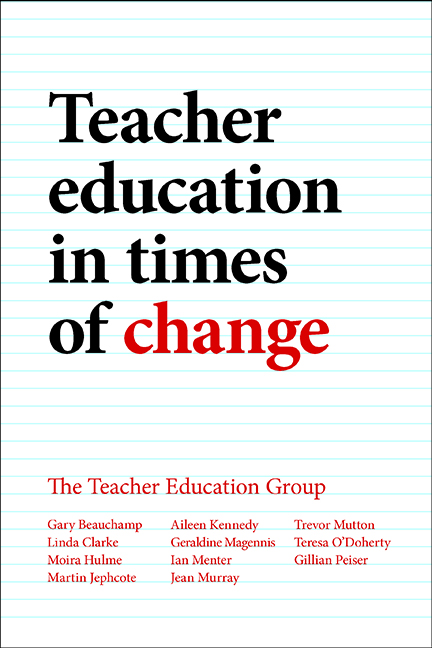Book contents
four - Teacher education in England: change in abundance, continuities in question
Published online by Cambridge University Press: 23 August 2022
Summary
Introduction
Alexander, Craft and Lynch’s (1984a) book Change in teacher education was written just before the publication of the landmark government circular 3/84 (DES, 1984) on teacher education, although its ‘substantial change in the direction of travel’ (Craft, 1984, p 332) was already clear. Alexander et al aimed to ‘reflect upon the changes in context and provision’ (Craft, 1984, p 332) that had characterised teacher education between the publication of the Robbins Report in 1963, and 1983. Their analyses identified both changes and continuities in teacher education over those 20 years, including:
• the changing role of government;
• shifts in the power of other stakeholders;
• the challenges of institutional reorganisation;
• the increasing engagement of the teaching profession in teacher education;
• the decline in the university ‘monopoly’.
But, as the editors of that volume also commented, two decades of organisational change had taken place ‘within a context of cultural and epistemological continuity’ (Alexander et al, 1984b, p xviii) in which similar debates about forms, contents and values of pre-service education or initial teacher education (ITE) persisted.
Teacher education in England in the 30 years since 1984 has been subject to significant changes, as part of an ever-present focus on raising educational standards in schools. Successive governments – of three political hues – have used ITE to address issues around the supply of high-quality teachers able to deliver improvements in the school system. As MacBeath (2011, p 377) has commented, because of this, teacher education has remained a ‘contentious issue’.
Research on teacher education in England has been accused of ahistoricism (Dent, 1977), of failing to take the ‘long view’ of historical change to bear on understanding the present and anticipating the future. Addressing such critiques, Gardner (1993) offered an analysis of how the ‘pendulum’ of ITE has swung over time between higher education institutions (HEIs) and schooling. Drawing on that analogy, the direction of the pendulum ‘swing’ between 1984 and 2014 was a movement, driven in large part by central government policies, further away from the dominance of higher education (HE) in earlier parts of the 20th century and towards schools and schooling as more influential stakeholders in ITE at present. With these changes have come significant alterations in the epistemologies, cultures, governance and institutional structures of ITE in England.
- Type
- Chapter
- Information
- Teacher Education in Times of ChangeResponding to challenges across the UK and Ireland, pp. 57 - 74Publisher: Bristol University PressPrint publication year: 2015

